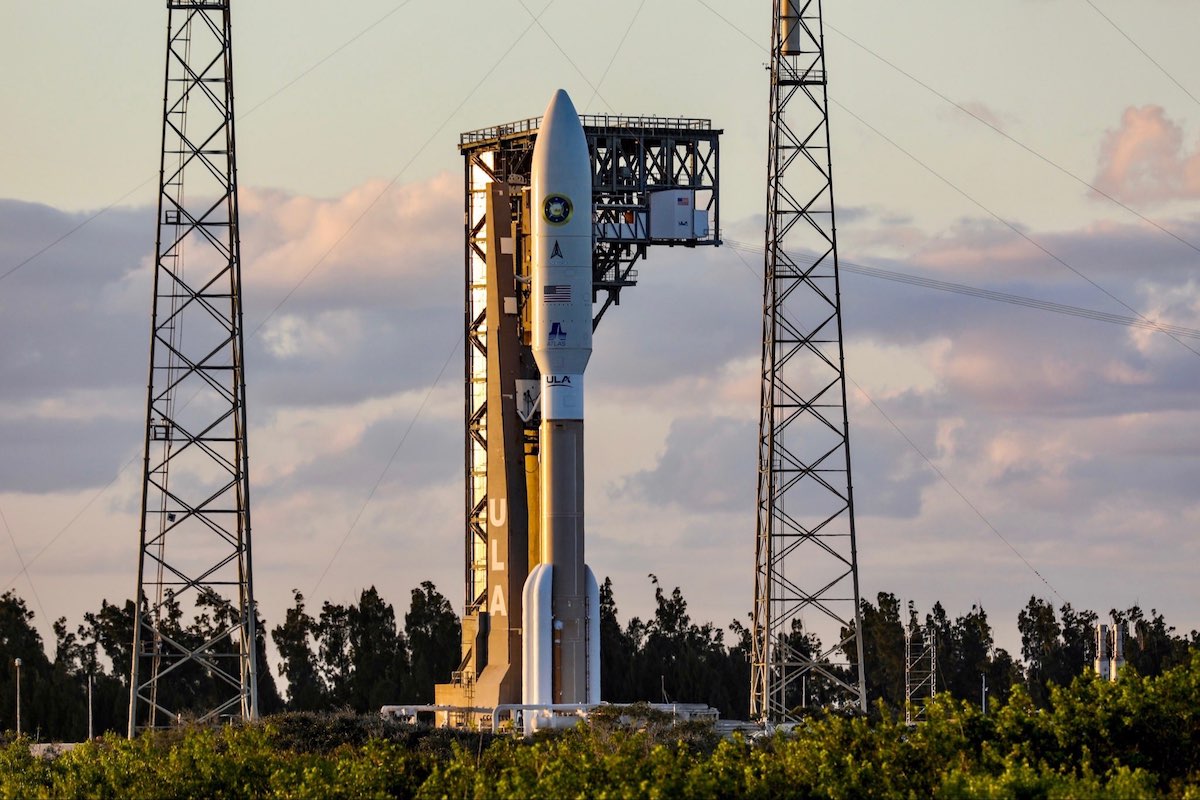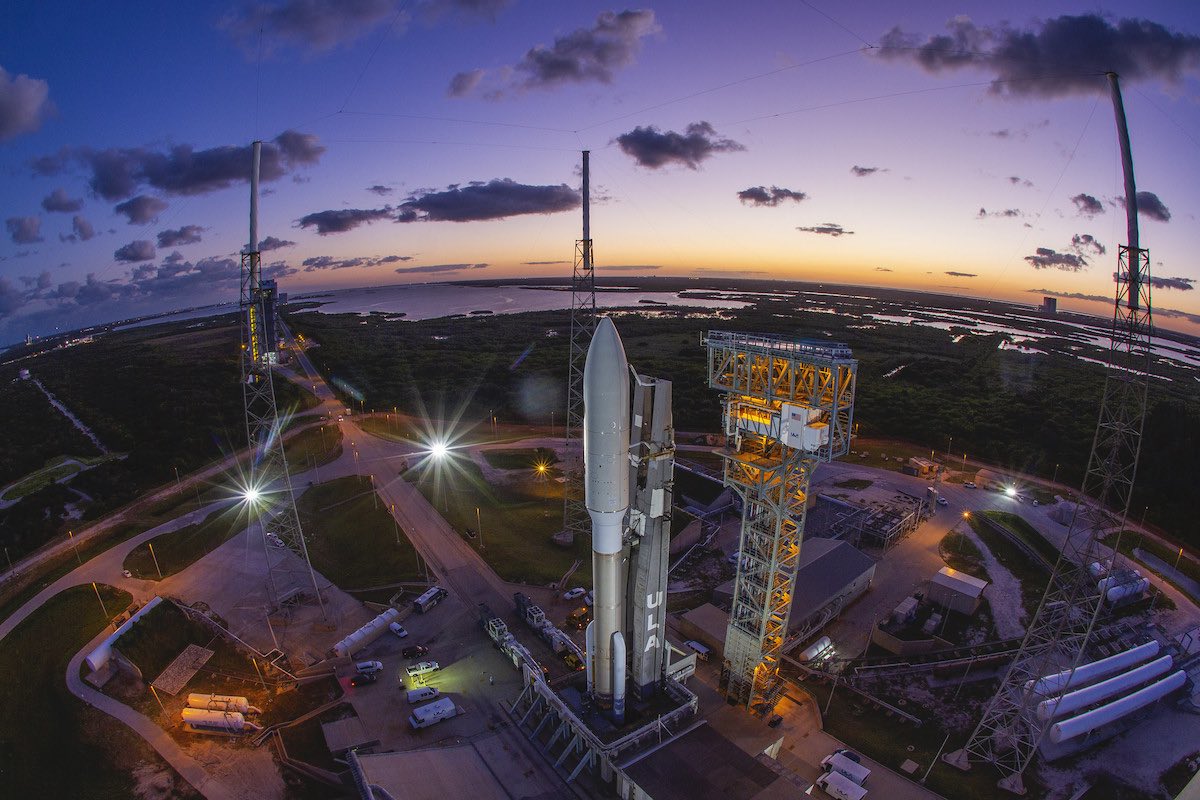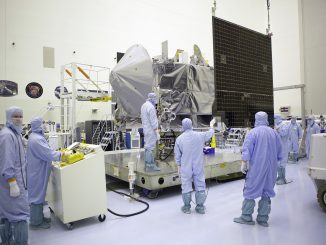A United Launch Alliance Atlas 5 rocket with a new type of solid rocket booster emerged from its hangar Tuesday evening for the 1,800-foot rollout to pad 41 at Cape Canaveral, moving into position for liftoff Wednesday with a classified National Reconnaissance Office payload.
The 206-foot-tall (63-meter) Atlas 5 rocket departed the Vertical Integration Facility around 4:30 p.m. EST (2130 GMT) Tuesday. Riding a mobile launch platform, the rocket arrived over the flame trench on pad 41 about one hour later.
The rollout followed the same path the rocket traveled Monday, when ULA transferred the Atlas 5 to the launch pad ahead of a planned liftoff Tuesday evening. But officials ordered the Atlas 5 back inside the VIF to resolve a concern with an environmental control system line feeding conditioned air to the National Reconnaissance Office payload on top of the rocket.
After returning the rocket to the VIF on Monday night, technicians swapped out the problematic environmental control system duct, which may have been damaged from high winds during the Atlas 5’s first trek to the pad. Tory Bruno, ULA’s president and CEO, tweeted that the company installed a reinforced duct in its place.
The return of the Atlas 5 to the VIF allowed workers to use platforms to access the location of the environmental control system line, which ULA said is inaccessible at the launch pad.
The Atlas 5 rocket’s nearly seven-hour countdown was scheduled to begin just after 11 a.m. EST (1600 GMT) Wednesday, with clocks timed for launch at 5:54 p.m. EST (2254 GMT).
The mission will mark the 86th flight of an Atlas 5 rocket, and the fifth Atlas 5 launch of the year.
The Atlas 5 rocket will fly in the “531” vehicle configuration with a 5.4-meter-diameter (17.7-foot) payload fairing, three solid rocket boosters, and a single RL10 engine on on its Centaur upper stage.
The three GEM 63 strap-on boosters clustered around the Atlas 5’s bronze core stage are flying for the first time. The new booster design was developed by Northrop Grumman.
ULA tapped Northrop Grumman to build solid rocket motors for future Atlas 5 missions and the company’s next-generation Vulcan Centaur rocket. The GEM 63s replace the AJ-60A strap-on booster made by Aerojet Rocketdyne.
The GEM 63s have the same form, fit and function as the AJ-60A motors that have flown on all prior Atlas 5 missions that required strap-on motors.
The GEM 63 motors measure 66 feet (20 meters) long and 63 inches (1.6 meters) wide. They can produce 373,800 pounds of thrust at maximum power.
ULA says the GEM 63 motors are less expensive and easier to handle during launch preparations. The company’s next-generation Vulcan Centaur rocket will fly with a larger Northrop Grumman solid booster named the GEM 63XL, and the introduction of the new rocket motors on the Atlas 5 will help retire risk before the first Vulcan Centaur launch, according to ULA.
See our Mission Status Center for live coverage of the countdown and launch.











Email the author.
Follow Stephen Clark on Twitter: @StephenClark1.



